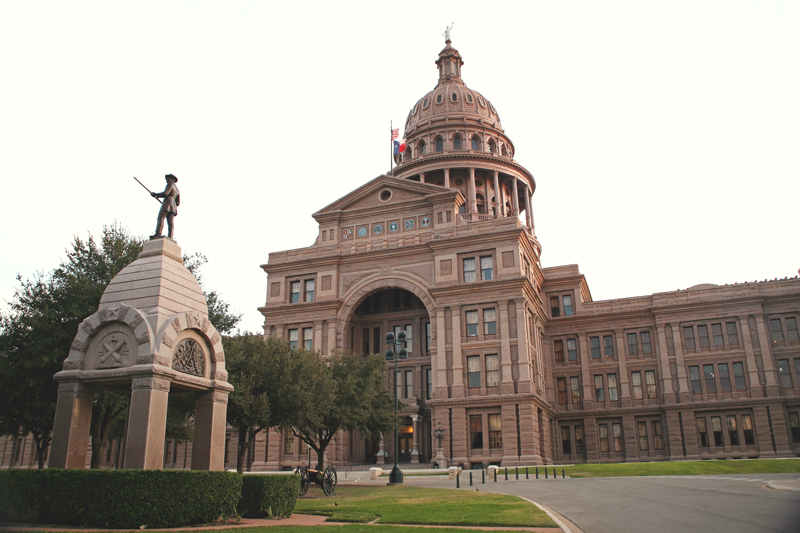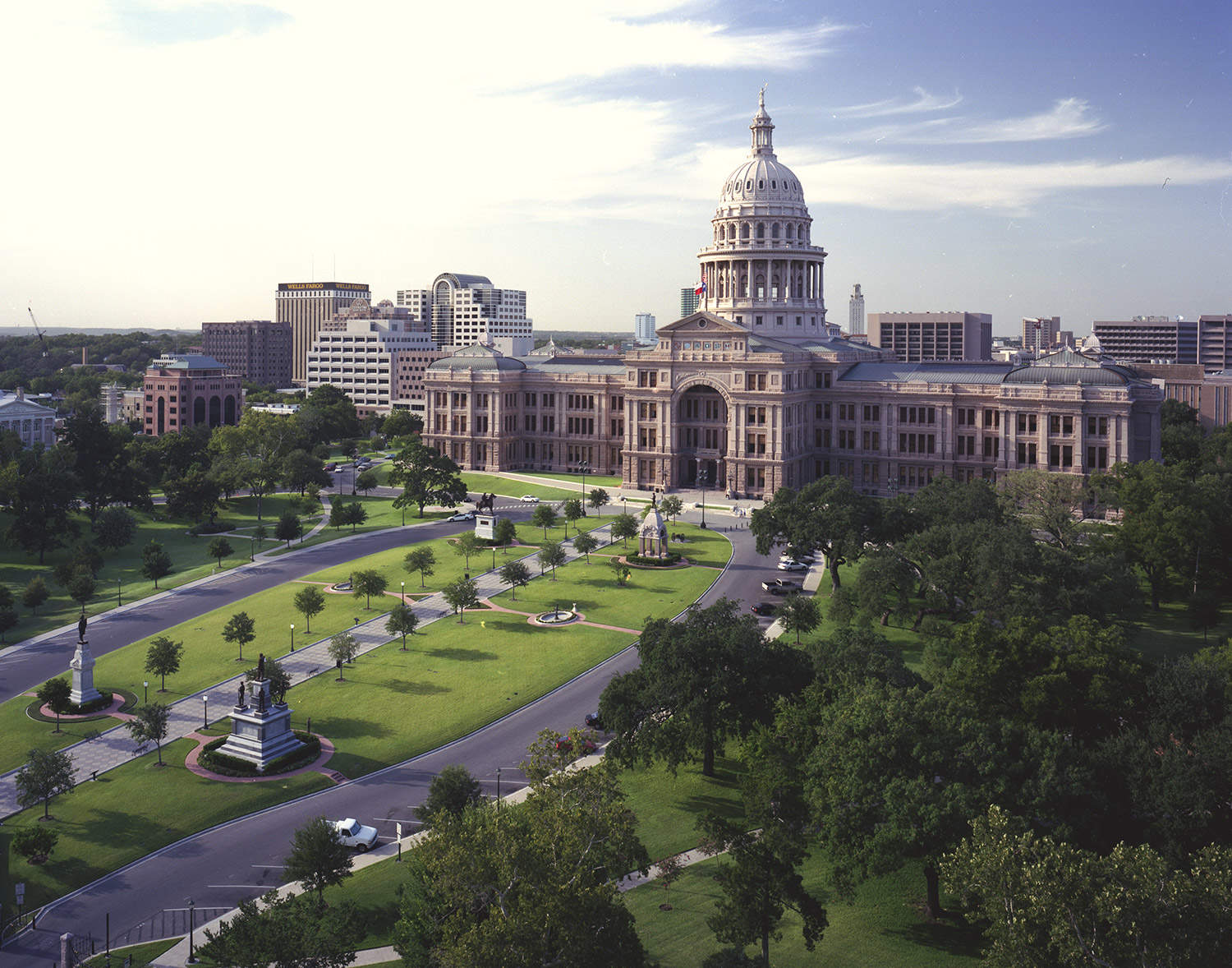Grounds
Telling the stories of Texas in granite and bronze.
Growth in Texas in the 1870s caused state officials to come to a conclusion: this big, grand and important state needed a big, grand and important capitol building.
The previous Capitol, built in 1853, was too small to hold all the state's departments. The classically designed building that would look right at home in Greece was also too understated for big-time Texas. In 1881, that building burned to the ground. It was definitely time for an upgrade.
The architecture of a civilization is its most enduring feature. Temple Houston, May 1888
Pay By Land
When the new capitol idea was conceived, Texas had only one resource big enough to generate the kind of money needed: land. In 1879, the 16th Legislature passed the acts to exchange the equivalent of ten Panhandle counties — over three million acres of land — in order to pay for the building's construction.
This new capitol needed to be both functional and monumental, so the Capitol Land Board— responsible for overseeing construction—solicited drawings from nationally-known architects in November of 1880. Eleven sets of drawings were submitted. In late April of 1881, New York architect Napoleon LeBrun served as consultant to the Land Board and evaluated the submissions. After two weeks of careful evaluation, LeBrun selected the designs submitted by Detroit architect Elijah E. Myers. Myers' original plans gave the Capitol a square dome, but the Capitol Board wanted a circular dome for the Goddess of Liberty to stand on. Myers received $1,700 for winning the contest and agreed to provide the construction documents for $12,000.
Breaking Ground
Ground broke for the new building on February 1, 1882. Construction was long and complicated. The Capitol was originally intended to be constructed from local limestone, but the natural stone looked dingy. Enter the beautiful "sunset red" granite that makes the building what it is today. Other difficulties with budgets and labor created several delays in the project. The construction of the superstructure took six years from initial groundbreaking to completion. The building was officially dedicated on May 16, 1888, with Sam Houston's son, Temple Houston, delivering the dedication speech. The building was completed and opened to the public in December, 1888.
More Than the Building
Covering 22 acres, the beautiful grounds of the Capitol are also home to 19 monuments that commemorate the stories of Texas history. The first monument, Heroes of the Alamo, was installed in 1891. The most recent monument, installed in 2014, honors the 3,417 Texas men and women who served and died in the Vietnam War.
Frequently Asked Questions
Where did the sunset red granite for the building come from?
The granite came from Granite Mountain near the site of present-day Marble Falls in Burnet County.
How much is the land worth today that was sold to fund the construction of the Captiol?
The three million acres are estimated to be worth about 7 billion dollars today.









